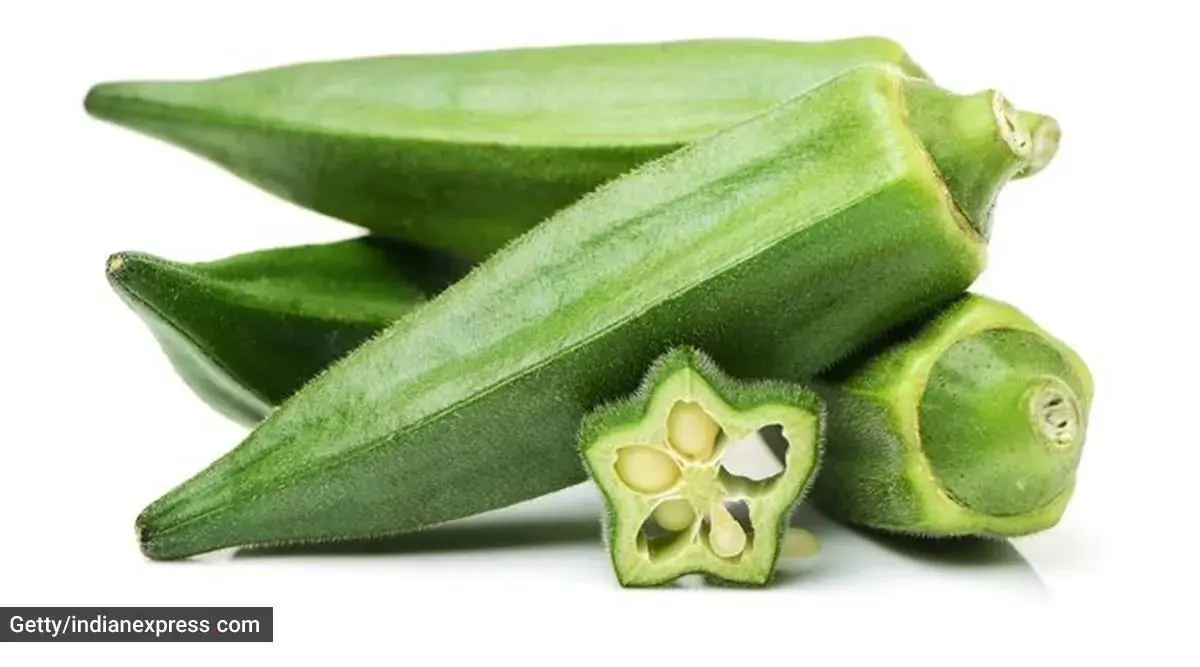It is a rich source of dietary fibre, which builds satiety, delays sugar release and limits hunger pangs, thereby reducing calorie loads. Pectin reduces bad cholesterol, say experts.

Okra contains high amounts of soluble and insoluble fibres, four grams per 100 grams.
If you thought that soaking chopped okra or lady’s finger (bhindi) overnight and drinking the water in the morning was just grandmotherly advice to control blood sugar, then several human clinical studies have shown encouraging results that prove traditional logic.
Okra, which is a fruit but used as a vegetable, is good for diabetics for two reasons. It is a rich source of insoluble dietary fibre, which builds satiety, delays sugar release and limits hunger pangs, thereby reducing calorie loads. Second, it regulates the absorption of sugar through the intestinal tract. In a 2011 study published in the Journal of Pharmacy and Bio Allied Sciences, researchers found that diabetic mice, fed with dried and ground okra peels and seeds, experienced a reduction in their blood glucose levels, while others showed a gradual decrease in blood glucose following regular feeding of okra extract for about ten days.
Shalini Garwin Bliss, Executive Dietitian, Manipal Hospital, Gurugram and Deepti Khatuja, Head of Clinical Nutrition, FMRI, Gurugram, explain the benefits of consuming okra and the best way to have it.
How does okra/bhindi stabilise blood sugar levels? What is the bio mechanism involved?
Okra contains high amounts of soluble and insoluble fibres, four grams per 100 grams. These require a longer time to be broken down, digested and in the process slow down sugar release into the blood. So, the blood sugar never spikes or plummets any time and remains stable. The diabetes-controlling ability of okra is the result of its ability to slow down sugar absorption in the intestine. Besides, okra is a good source of phytochemicals, antioxidants and other nutrients like potassium, linoleic acid, vitamin C, calcium, protein and folate. Just one cup of cooked okra packs around 37 micrograms (mcg) of folate.
What makes it a good food for diabetics?
Apart from fibre, okra is a rich source of antioxidants, vitamins B6 and folate, all of which help regularise blood sugar levels and reduce the progression of diabetic neuropathy. It has a low glycaemic index (GI), an index that measures how quickly food affects sugar levels in your bloodstream. It contains a good amount of liquids and is low in calories, which help in weight management. Being easily available and easy to prepare, it can easily become a part of your daily diet.
What are the general health benefits of consuming okra?
The high fibre content is good for controlling cholesterol. It contains the enzyme pectin, which helps to reduce bad cholesterol and increases good cholesterol, thereby protecting heart health. It prevents oxidative damage to cells and lowers the risk of cancer. It also prevents anaemia. The mucilage of okra binds the cholesterol and pulls out bile acid carrying toxins that are dumped into the liver. With 47.4 per cent of linoleic acid, okra becomes a very good source of polyunsaturated fatty acids. The protein content, which is almost equivalent to that of soya, the enzyme lysine, and tryptophan amino acid (which regulates serotonin and melatonin and our sleep-wake cycle) make okra a powerhouse food.
How to consume okra?
It can be eaten as a cooked vegetable with rotis or flatbreads. It can be easily prepared in limited oil, lightly sautéed or stir fried. It can be eaten as a roasted snack and be added to your dals, soups and curries. The thick slimy polysaccharide present in okra pods is used to thicken soups and stews. In the Middle East, such stews are part of the main diet. Okra seeds can be pressed for their yellowish green oil that contains a good amount of linoleic and oleic acid. This oil is healthy, flavourful and aromatic. Okra leaves, on the other hand, can be used for preparing salads, vegetables and porridges.